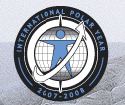 The students will respond to a focus question about the important seasonal indicators in their area (such as budburst, leaves changing colors, or river/lake freeze-up or break-up), and how those indicators may be impacted by climate change. They will then discuss their answers with each other and with several arctic and antarctic scientists who will be on hand.
The students will respond to a focus question about the important seasonal indicators in their area (such as budburst, leaves changing colors, or river/lake freeze-up or break-up), and how those indicators may be impacted by climate change. They will then discuss their answers with each other and with several arctic and antarctic scientists who will be on hand.This videoconference, similar to one that was held a year ago on the UAF campus, is part of an International Polar Year (IPY) project called Seasons and Biomes that is headed by Dr. Elena Sparrow of the International Arctic Research Center Colorado State University
 This second videoconference marks the beginning of a student research campaign for GLOBE students who have already started measuring environmental/seasonal parameters around their schools. This campaign is intended to foster students’ understanding of the process of science. Individual students or groups of students may work with scientists or with students from other schools in other parts of the world on their research investigations.
This second videoconference marks the beginning of a student research campaign for GLOBE students who have already started measuring environmental/seasonal parameters around their schools. This campaign is intended to foster students’ understanding of the process of science. Individual students or groups of students may work with scientists or with students from other schools in other parts of the world on their research investigations.On Thursday, April 10, students from the videoconference along with other GLOBE Seasons and Biomes students will engage with scientists in a two-hour live web chat to further discuss issues and ideas brought up during the Tuesday videoconference, along with any additional questions that may arise. When the web chat is over, a day-and-a-half long web forum will begin that will allow even more GLOBE students from other parts of the world to participate by posting questions that scientists will respond to over the following week.
More information on these activities can be found here. Seasons and Biomes is one of the projects in UArctic’s IPY Higher Education and Outreach Cluster.
